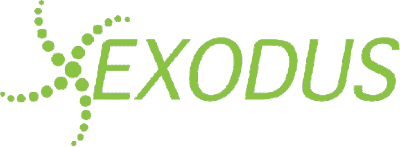When it comes to cloud computing, there are three main ways providers deliver services to end users: Software-as-a-Service, Platform-as-a-Service, and Infrastructure-as-a-Service. Each model has its own benefits and drawbacks, so it’s important to choose the one that would give your business the most value. In this blog post, we will discuss the different types of cloud computing service models and help you decide which one fits your business needs the best.
1. Software-as-a-Service (SaaS)
SaaS is one of the most common and well known cloud service delivery models. Unlike software that you install on your computer, SaaS solutions are hosted on a provider’s servers. That is, when you open a mobile or web browser app, the device merely sends inputs to a data center. The data center then processes the inputs and sends the outputs back to your device. Minimal to no processing is done on your device itself. And for as long as you have an internet connection, you can access the software from any device, at any time.
With SaaS, your provider is responsible for software maintenance and updates. They’ll make sure to roll out updates once these become available so that all users have the same version of a particular software at the same time. This means you don’t have to spend time and effort manually managing software and checking for updates, which can lead you to save on related costs.
For improved efficiency and productivity, SaaS software solutions typically include document creation suites, accounting software, email services, HR solutions, content management tools, customer relationship management systems, and more.
In a nutshell, SaaS is:
- Ready to use and available over the internet
- Hosted on a remote server by a third-party provider
- Scalable, with different tiers for small, medium, and enterprise-level businesses
- Inclusive, offering security, compliance, and maintenance as part of the cost
2. Platform-as-a-Service (PaaS)
PaaS is primarily used by developers who need a virtual environment for developing and testing their own custom software or apps. This means developers don’t need to build and maintain their own infrastructure consisting of networking devices, storage, servers, an operating system, and other necessary hardware and software when developing applications. This saves them time and money.
Aside from helping businesses improve the quality of their products, PaaS enables businesses to shorten their product development cycles, leading to faster time to market for new products.
Most companies that utilize PaaS do so to either host or develop their own software solutions or provide support for software used by their employees. But while PaaS is gaining popularity with many small businesses, most won’t have firsthand interactions with this type of cloud unless they need to build their own software or app.
In general, PaaS solutions are:
- Accessible to multiple users for enhanced collaboration
- Scalable, with various tiers of resources to suit the size of your business
- Built on virtualization technology
- Easy to run without extensive system administration knowledge
3. Infrastructure-as-a-Service (IaaS)
IaaS is considered one of the most flexible cloud models, as it gives the most ideal options when it comes to IT hardware infrastructure. IaaS offers services such as pay-as-you-go storage, networking, and virtualization. The most popular and well-known type of IaaS is the virtual machine — a digital version of a computer or server that is accessed over the internet. IaaS gives you cloud-based alternatives to expensive on-premises infrastructure, so you can use your funds to invest in other things.
In other words, if you are looking to virtualize your systems via the cloud, IaaS is a good place to start, as it allows you to easily move existing support systems. Other solutions can then be migrated or introduced as needed.
IaaS is:
- Highly flexible and scalable
- Accessible by multiple users
- Cost-effective
While the cloud offers a wide variety of benefits and solutions, choosing the service model that best fits your company’s needs can be daunting. Get in touch with us today and we’ll help you find the best solution for your business and ensure proper migration and implementation so you can focus on running your business.


